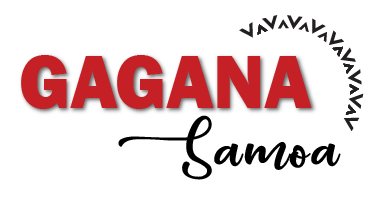The Samoan word for hello is talofa! …but we use a few other greetings as well, according to who we’re speaking with and the formality of the situation. In this lesson, we’ll practice some of Samoa’s most common greeting words and phrases (with audio).
But first, when you’re learning to communicate in another language, it’s always good to be aware of how (as in, what we actually do when) we say hello to each other.
How Samoans Greet Each Other
Back in the old days, Samoans greeted each other by touching foreheads and rubbing noses together – very much like the traditional hongi greeting of Māori. The Samoan word for it is sogi, which implies breathing in through your nose, so our greeting was essentially an exchange of breath.
The practice was widely discontinued in Samoa after the Spanish influenza pandemic of 1918 wiped out a around 20 percent of our population and taught us how viruses can spread.
These days, Samoans generally like to greet each other with a single kiss on the cheek, especially if you already know each other. In more formal situations, it’s also common to begin with a handshake and then maybe even press your shoulders together (like a hug) before – or instead of – the kiss on the cheek.

Now, what about the language that Samoans use to greet people?
Let’s have a look.
Saying Hello…With All My Love
Talofa! is the official word for hello in Samoan, but it comes from an older greeting that is packed with beautiful meaning.
Si o’u alofa, which is also expressed as si o ta alofa literally means: my love (the ‘ta‘ has a more affectionate connotation), but the unspoken understanding behind this phrase is that I am offering my love to the person I’m addressing… so basically, my love is for you.
As a greeting, I only really hear ‘sio’ualofa/siotaalofa’ spoken by our elders, especially amongst the women and usually when they know each other very well. Even then, it’s not a common greeting, so I always consider it a special moment when I hear it.
Our most common word for hello, talofa, has inherited some of the warmth and sentiment of this older greeting.
Talofa to Everyone!
Here are some audio examples of talofa used to greet different people.
The word lava adds more emphasis – more warmth and sincerity – to our greetings.
A More Casual Hello
When you’re greeting someone you know (or if you’re just a casual kinda person), it’s quite common to say mālō. We would still add the word lava to give this greeting more warmth and emphasis.Other Samoan Greeting Words
As with other cultures, it’s also appropriate to greet people by asking after their health, or welcoming them into your home:Notice the different phrases we have for welcoming people? Afio mai, maliu mai and sūsū mai are used to greet our matai (chiefs) and other important people, but which of these phrase we use depends on the rank or type of matai we are welcoming.
Learn more about how to greet important people and Samoan matai at Anavatau.
The Most Samoan of Greetings
This greeting confused me when I first heard it, but I soon learned that it’s so common and so very Samoan.
When you show up somewhere, it’s perfectly natural for a Samoan to ask, “Ua ‘e sau?” which means, “Have you arrived?”
Anyone outside our culture might think, “Uhh can you not see that I am here, therefore I have arrived?” and they might wonder why you would bother with the question.
But the question is rhetorical, of course. It’s just a way for the greeter to acknowledge that you are now in their presence, AND I’ve noticed that if your arrival is unexpected, this question is a beautifully subtle way of asking why you are here.
Remember that next time a Samoan asks you, “Ua ‘e sau?“
